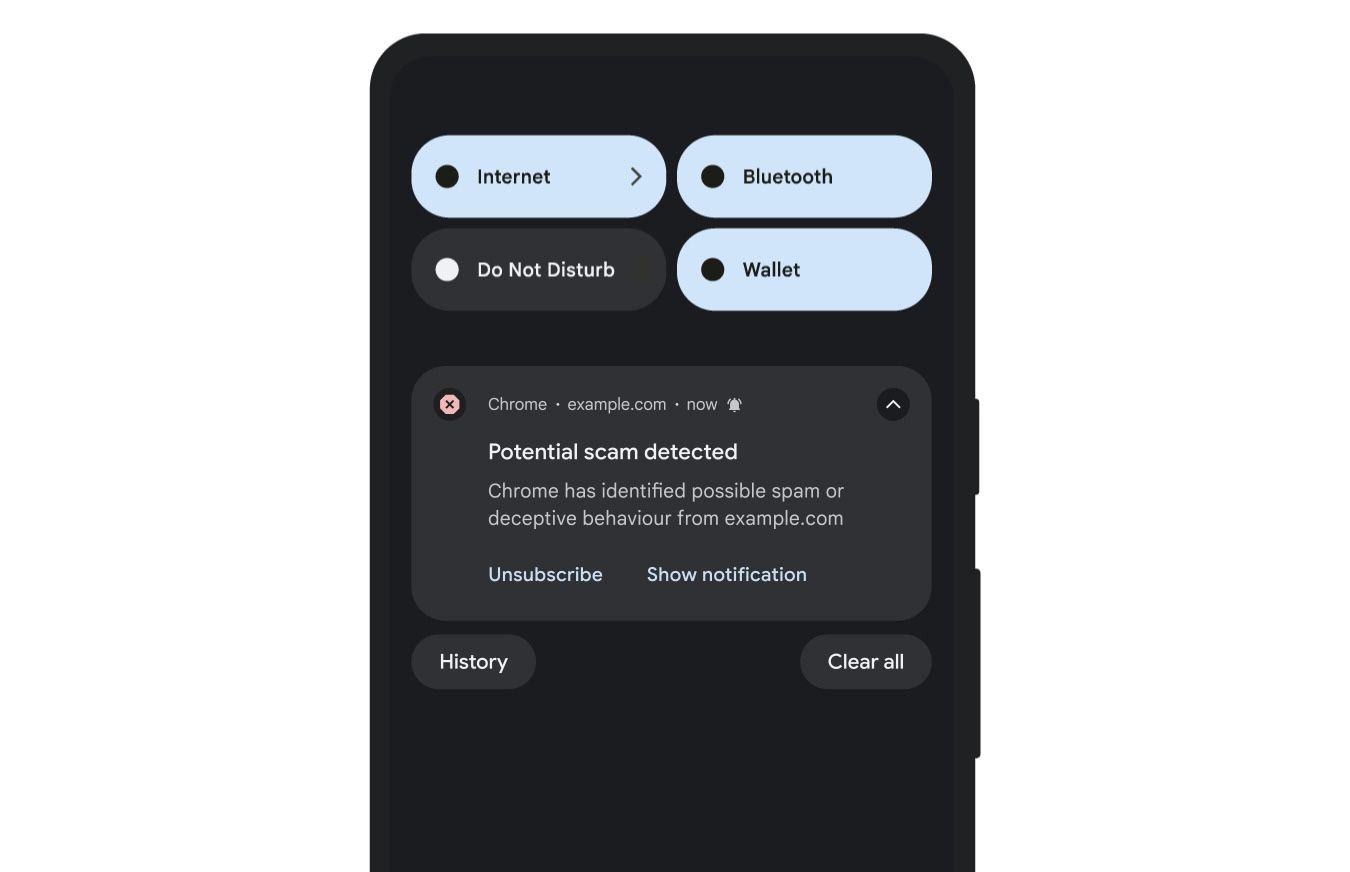Google is using its artificial intelligence, Gemini Nano, to fight online scams more effectively. The AI is changing how the Chrome browser, Android devices, and Google Search detects and stops fraudulent activity in real time.
This new method is more advanced than older techniques, which should help protect users from new threats and keep up with scammers’ constantly changing tactics. This isn’t new; Google has used AI to fight online scams for years. The company’s Fighting Scams in Search report claims to have stopped hundreds of millions of fake search results every day.
Still, recent improvements have made the system much more powerful. This is thanks to upgrades in Google’s AI-powered scam detection. According to the Chromium Blog, the company now identifies and blocks 20 times as many scam websites in Search. This means a much safer experience for millions of users, keeping them away from sites designed to steal their money or personal information.
The system works especially well in certain areas. For example, Google has seen a big increase in scams where criminals pretend to be airline customer service agents or even Google agents. By using AI, Google has cut these scams by more than 80% in Search, stopping many people from falling for these tricks.
Chrome now uses Gemini Nano to add another layer of protection, especially in Enhanced Protection mode. This on-device LLM works like a fast-response system, instantly checking website content for signs of malicious activity. If a user visits a suspicious site, certain triggers (like using the keyboard lock API that stops users from closing the scam window) alert Gemini Nano. The LLM then examines the webpage’s content, looking for security signals that show the site’s true purpose.
This could include warning pop-ups or full-screen takeovers, typical in tech support scams. The information is sent to Google Safe Browsing for a final decision. If Safe Browsing confirms the threat, a warning message prevents the user from interacting with the dangerous site.
This on-device approach has major benefits. Speed is critical because many scam websites only stay active for a very short time, often less than 10 minutes. Gemini Nano’s instant analysis lets Google detect and block these quick-moving threats before they can do widespread harm, overcoming the limits of traditional scanning methods. Additionally, the on-device system gives a unique view by analyzing how the website appears to the actual user.
This is important because scammers often design their sites to trick Google’s automated scanners. They show different content to real users than to detection systems.
Chrome on Android also now has AI-powered warnings for suspicious or spammy notifications. This makes sure that notifications marked as harmful are truly risky without exposing user data. When a notification is flagged, users see a clear warning, letting them unsubscribe from the site or view the potentially dangerous content.
The LLM works locally on the device, keeping sensitive data secure. Resource usage is carefully managed through optimizations, including asynchronous processing to avoid interruptions and controls to limit GPU usage. The LLM only sends summarized security signals to Safe Browsing for users who have turned on Enhanced Protection, but even users with Standard Protection benefit.
This is great for everyone involved because you still get the protections while you don’t have to sign up. Still, the best security measures are being careful and thinking twice before clicking links, listening to callers, or downloading files.
Source: Google





